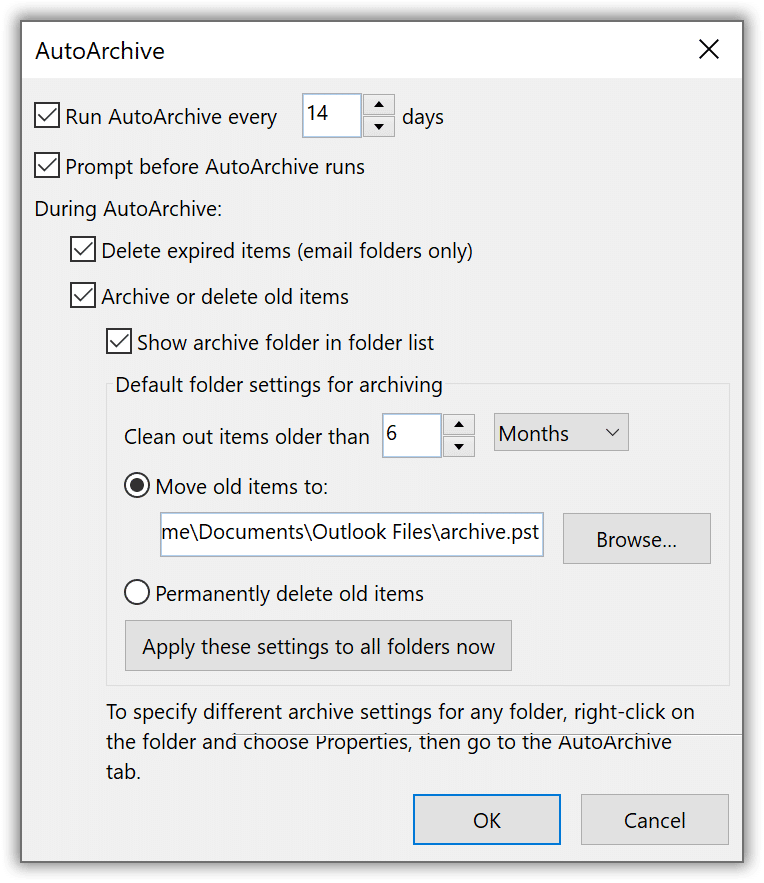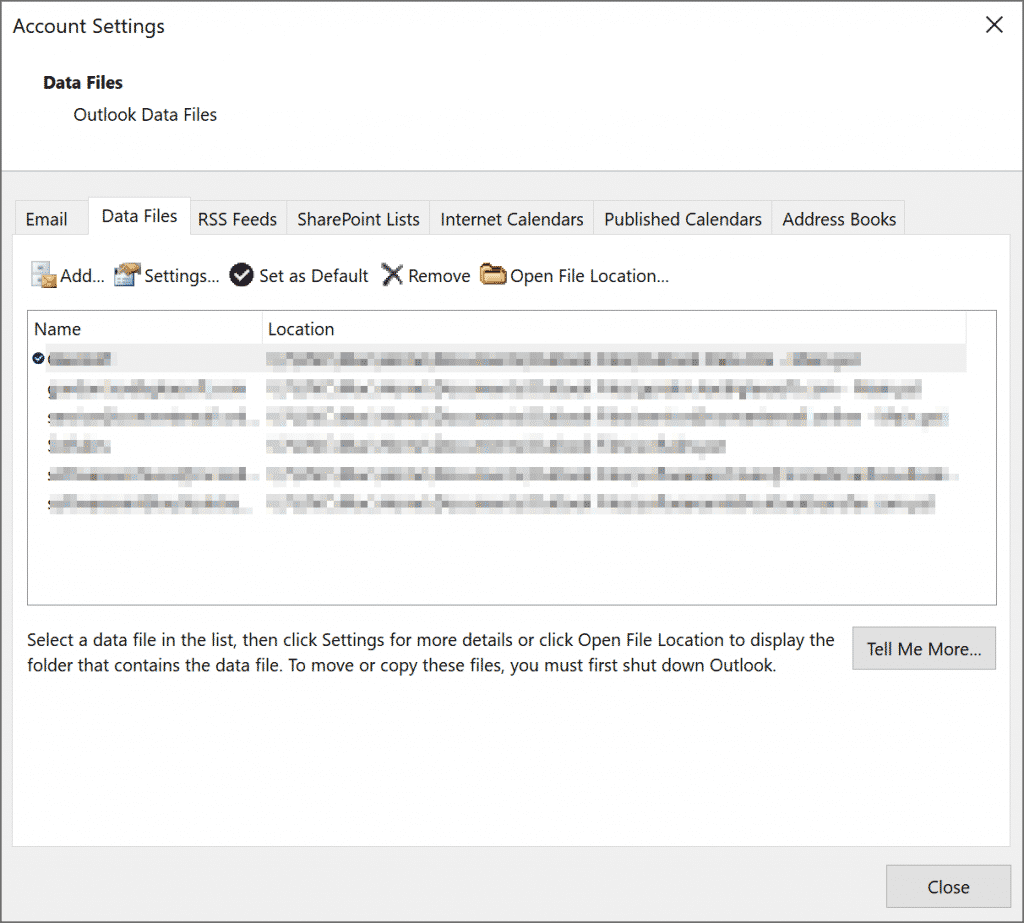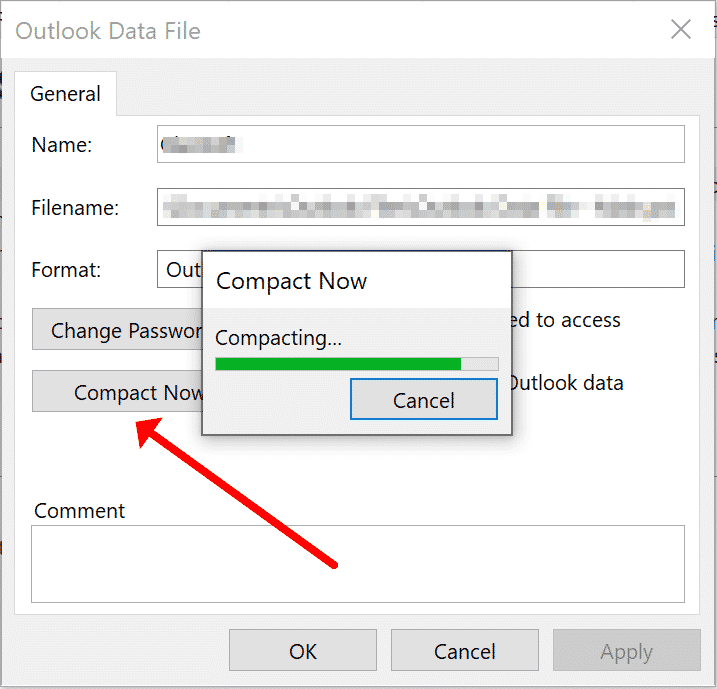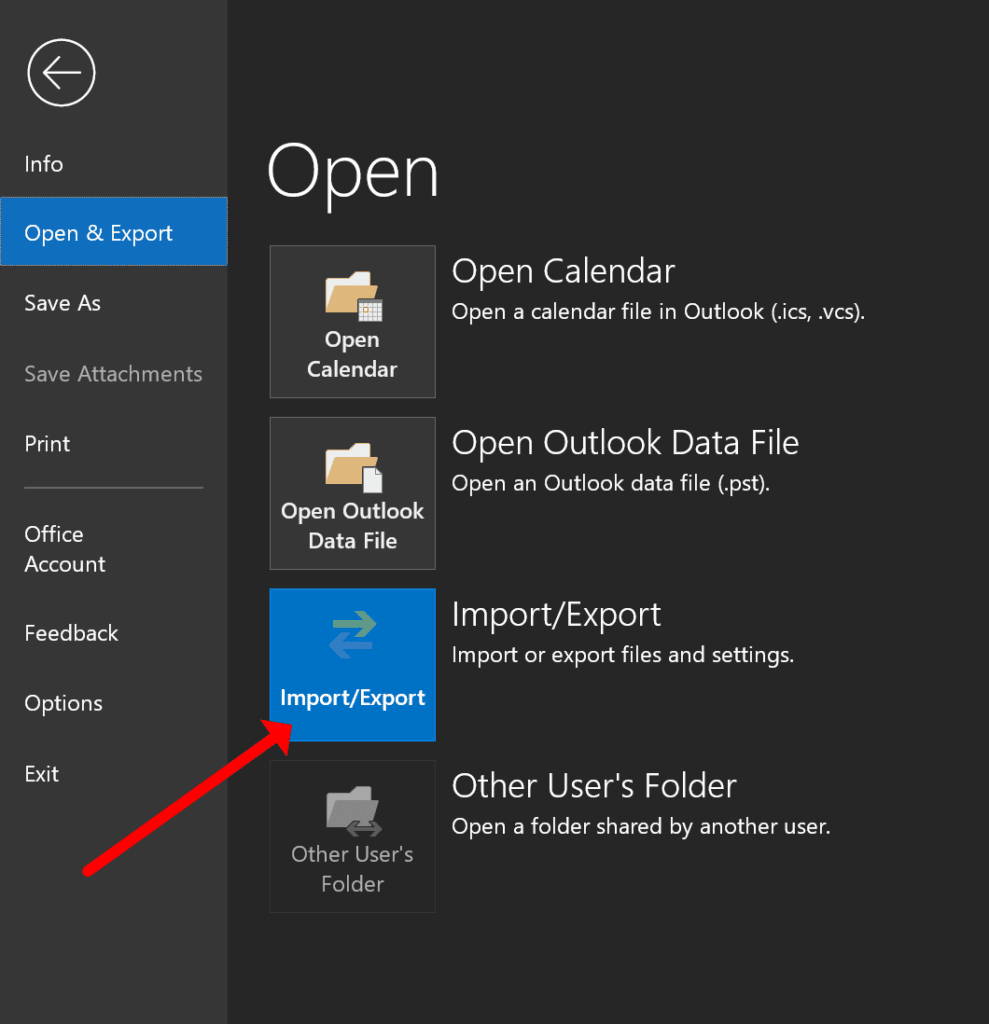
This issue can be frustrating and cause you to miss important emails, meetings, and deadlines. Fortunately, there are solutions to this problem, and in this guide, we will walk you through the steps you can take to solve this error and keep your Outlook running smoothly.
Whether you are a busy professional, a student, or just an average user, our comprehensive guide will help you overcome this issue and confidently get back to using Outlook.
What Is the Maximum File Size Reached in Outlook?

For Outlook 2010 and later, the limit is 50 GB. If you’ve reached that PST file size limit, you’ll get error messages, and your Outlook will start acting up.
The main causes of Maximum Size error in MS Outlook are:
-
- Large mailbox size: When the size of the mailbox exceeds the maximum allowed limit, it can cause this error.
- Accumulation of too many emails and attachments: When too many emails and attachments are stored in the mailbox, it can cause the mailbox to reach its maximum size.
- Overflowing folder with trashed messages. Deleted messages are moved to the “Deleted Items” folder that needs to be emptied periodically.
- Outdated version of Outlook: If the user is using an outdated version of Outlook, it may not be able to handle large mailbox sizes, leading to this error.
- Corrupt PST file: If the PST file (personal storage table) that contains the mailbox data is corrupt, it can cause this error.
Solutions to Fix the “Outlook Data File Has Reached the Maximum Size”
Now that you know about the file size limitation, it’s time to get into the solutions meant to help you deal with the issues that happen if ost has reached the maximum size. These solutions are based on what we know about the program and what Microsoft’s guidance says.
1. Archive Your Data
If Outlook PST has reached its maximum size, it’s probably because you have a lot of old emails and attachments that you don’t need anymore. If the user is not archiving emails and attachments properly, it can lead to a large mailbox size and cause this error. So, the first solution is to archive that stuff. Here’s how you can do it.
How to Archive Data Files in Outlook 2013 / 2016 / 2019
Given there are differences in the archiving procedure of newer versions of Outlook, here is the step-by-step process of archiving data in Outlook 2013/2016/2019. First, create new Outlook data file for further archiving:
-
- Select menu File and choose Info.
- Choose Account Settings and select Account Settings from the menu. The Account Settings window will open.
- Click the Data File tab.
- Click Add.
- Select Outlook Data File and choose OK.
- Enter the name for the archive under the File name and select the location where you want to save the file.
- Choose OK and close the window.
Enable the Automatic Archiving
Use the auto-archiving feature in Outlook to automatically move older emails and attachments to archive folders. To enable the auto-archiving emails in Outlook:
-
- Go to the File tab
- Select Options, then Advanced
- Click on AutoArchive Settings.
- Use previously created archive data file to store older emails and attachments, reducing the size of the main mailbox.
Archive Data Files in Outlook 2010
Here is the guide with the steps Microsoft recommended following when Outlook reached maximum size:
-
- Click on the File menu on Outlook 2010 and select the option Cleanup Tools.
- In the Cleanup Tools, you will see an option called Archive.
- Click on Archive and select the folder you want to archive.
- Enter a date under Archive items older than.
- You can create multiple .pst files to archive some folders using different settings.
2. Compact Outlook Data File to Fix “Outlook Data File Has Reached the Maximum Size” Issue
Compacting an Outlook data file means compressing the file by removing any empty or unused space, reducing the overall file size. The compact Outlook data file frees up space and could resolve issues when the Outlook data file has reached the maximum size.
Prior to run the compaction delete emails that are no longer needed or move them to archive folders to reduce the mailbox size. Regularly compact the mailbox to remove any unused space and reduce the size of the mailbox. This can be done by right-clicking on the mailbox folder and selecting the “Properties” option, then selecting “Advanced” and clicking on “Compact Now”.
Here’s how to go about compacting your data file:
- In Outlook, click on File > Account Settings > Account Settings;
- Go to the Data Files tab and select the PST file you want to compact;
- Click on Settings > Compact Now;
- Wait for Outlook to do its thing.
3. Split Outlook PST Files into Multiple Smaller Files
If the compact Outlook data file does not ease things when Outlook ost has reached maximum size, try splitting the PST file into smaller files. How do you do that? Here are the steps:
- Download and install a third-party tool like PST Splitter;
- Launch the tool and select the PST file you want to split;
- Choose the size of the new PST files;
- Click on Split and wait for the tool to do its thing.
4. Fix Problem Via Import/Export Wizard
The import/export wizard can help with the ‘Outlook data file reached Maximum Size’ limit by allowing you to export some of your data to a new Outlook data file. With even smaller space requirements, you can create a compact Outlook data file stored on an external hard drive.
You can always import the exported data file back into Outlook whenever you need to access that data.
Here’s how to access and use the wizard:
- In Outlook, click on File > Open & Export > Import/Export
- Choose Export to a file and click Next
- Select Outlook Data File (.pst) and click Next
- Choose the folder you want to export and click Next
- Choose where you want to save the new PST file and click Finish
For importing a file, you can always go to the same setting and click ‘Import’ instead of ‘Export.’
5. Export Via Data Extraction Kit for Outlook
The Data Extraction Kit for Outlook is a valuable tool for managing large amounts of data in Outlook and ensuring that your data file remains stable and functional. When the Outlook data file reached the maximum size, you can move large email folders, attachments, and other data to an external or cloud storage device, freeing up space in your Outlook data file.
This can help you maintain optimal performance and prevent data corruption or loss when your data file exceeds its size limit. Once you have extracted your data, you can either delete the original data file or compact it to reduce its size further.
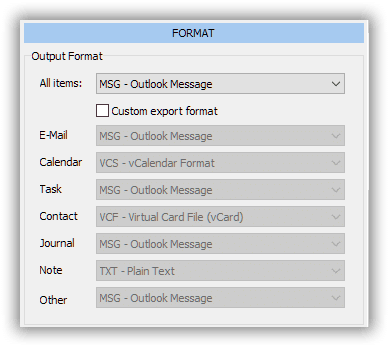
Here’s how to use the tool:
- Download the Data Extraction Kit for Outlook and install the tool
- Launch the tool and select the PST file you want to export
- Choose the data and file format you want to export and click Next
- Choose where you want to save the new file and click Export.
“Outlook Data File Has Reached the Maximum Size” Error Can result in:
When the Outlook data file has reached the maximum size, several scenarios could play out. Some include the following:
1. PST File Corruption
When an Outlook data file, also known as a PST file, reaches its maximum size, it becomes vulnerable to corruption. PST files have a pre-defined size limit, which is determined by the version of Outlook you are using. For example, older versions of Outlook had a PST file size limit of 2 GB, while newer versions allow larger PST files.
Corruption can occur for various reasons, such as sudden power outages or improper shutdowns while Outlook is still running, which can result in the file being locked and inaccessible.
Additionally, the more data stored in a PST file, the more fragmented it becomes. This means that when data is added or removed, it is not necessarily saved in contiguous memory blocks, leading to performance issues and increasing the likelihood of corruption.
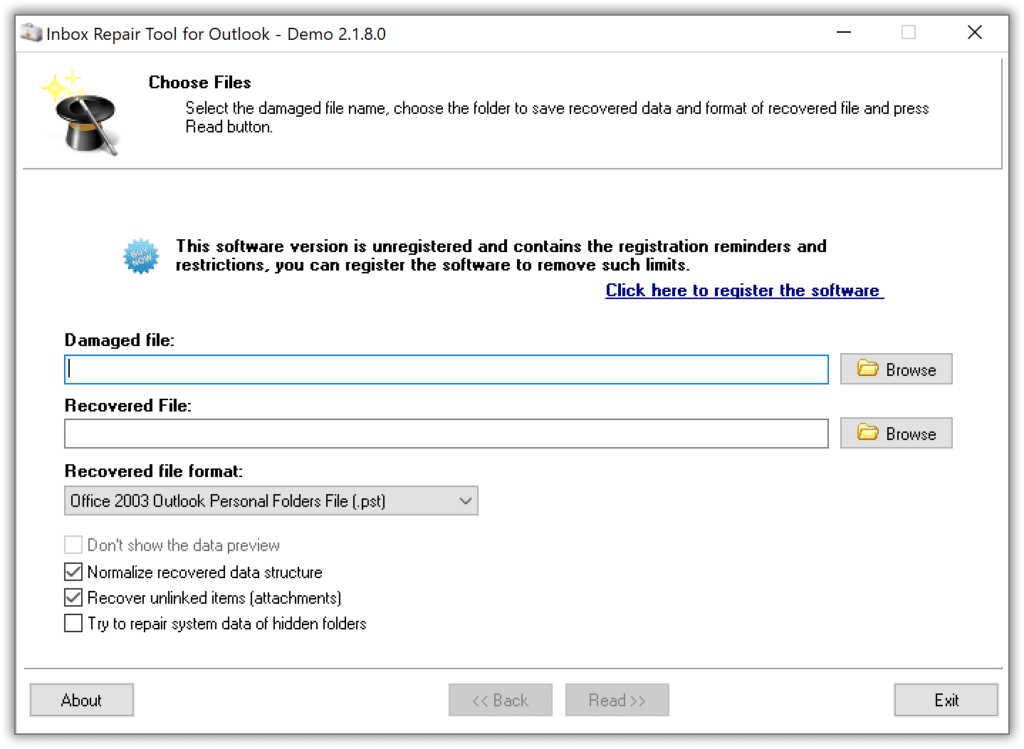
Use the built-in Inbox Repair Tool or Scanpst.exe to repair the PST file. This tool can be found in the installation directory of Microsoft Office. If the built-in tool is unable to repair the PST file, use a third-party PST repair tool to fix the issue. You may also upgrade to the latest version of Outlook to increase the mailbox limit. This can be done by going to the “File” tab and selecting “Office Account” or “Help” option.
2. Inaccessible Outlook Emails or Mailbox Folder
When an outlook data file has reached maximum size, it becomes inaccessible, meaning the user can’t access the mailbox folders, or the emails stored in them.
This happens because Outlook uses a PST (Personal Storage Table) file to store all its data, including emails, contacts, and other items. The PST file has a default maximum size limit of 20 GB for Outlook 2007 and earlier versions and 50 GB for later versions.
When the PST file exceeds this limit, Outlook starts behaving erratically, and some mailbox folders become inaccessible.
Advanced users may resolve the problem by increasing the default PST size limit.
3. Decreases of Outlook Efficiency and Even Crashing
When an Outlook data file has reached the maximum size limit, Outlook may run slowly or freeze, making it difficult to access or manage email, contacts, and calendar information. This is because Outlook needs to perform more actions to read and write data to and from the file, which can take longer and consume more system resources.
As the data file size grows, the time required to perform simple tasks such as searching for a specific email, opening an attachment, or moving emails to another folder can become unbearably long.
FAQs
How do I fix Outlook OST has reached maximum size?
One solution is to archive or move old emails to another location and deleting old unneeded emails. Another option is to compact the OST file or split the PST file into smaller files. Experienced users can increase the maximum limit value in the system registry to allow larger Outlook data files.
How can I get more than 50gb file size in Outlook?
Outlook’s maximum PST file size is 50 GB, which cannot be increased. However, one workaround is to create multiple PST files and divide the emails accordingly. Alternatively the user can request the mailbox size limit to be increased by the email administrator.
How do I increase the maximum Outlook PST file size?
Outlook’s maximum PST file size is fixed and cannot be increased. However, you can create multiple PST files and divide the emails accordingly to avoid reaching the maximum file size limit or increase the PST size limit values via the registry settings.

